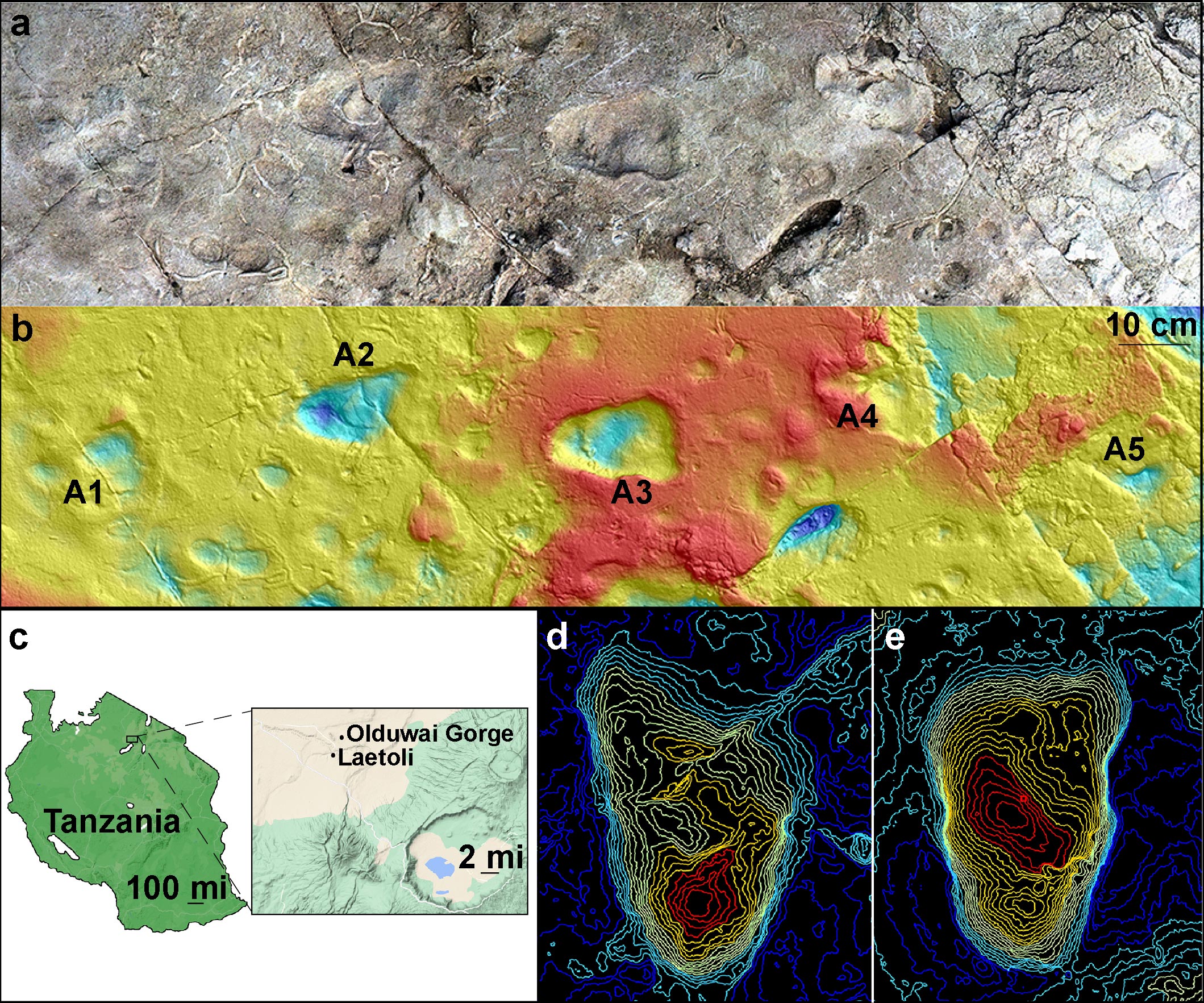
Another set of mysterious footprints was partially excavated at nearby Site A in 1976 but dismissed as possibly being made by a bear.
A recent re-excavation of the Site A footprints at Laetoli and a detailed comparative analysis reveal that the footprints were made by an early human— a bipedal hominin, according to a new study reported in Nature.
She started the work as a graduate student in Ecology, Evolution, Environment, and Society at Dartmouth College, where she focused on the biomechanics of walking in early humans and utilized comparative anatomy, including that of bears, to understand how the heel bone contacts the ground (a foot position called “plantigrady”).
McNutt was fascinated by the bipedal (upright walking) footprints at Laetoli Site A.Laetoli is famous for its impressive trackway of hominin footprints at Sites G and S, which are generally accepted as Australopithecus afarensis—the species of the famous partial skeleton “Lucy.” But because the footprints at Site A were so different, some researchers thought they were made by a young bear walking upright on its hind legs.
To determine the maker of the Site A footprints, in June 2019, an international research team led by co-author Charles Musiba, an associate professor of anthropology at University of Colorado Denver, went to Laetoli, where they re-excavated and fully cleaned the five, consecutive footprints.The researchers compared the Laetoli Site A tracks to the footprints of black bears (Ursus americanus), chimpanzees (Pan troglodytes), and humans (Homo sapiens).On left: Ellison McNutt collects data from a juvenile female black bear (Ursus americanus), who walks bipedally, unassisted through the mud trackway at Kilham Bear Center in Lyme, New Hampshire.On right: Left footprint from one of the juvenile male black bears.
They teamed up with co-authors Ben and Phoebe Kilham, who run the Kilham Bear Center, a rescue and rehabilitation center for black bears in Lyme, New Hampshire.They identified four semi-wild juvenile black bears at the Center, with feet similar in size to that of the Site A footprints.
The bears walked on two feet less than 1% of the total observation time making it unlikely that a bear made the footprints at Laetoli, especially given that no footprints were found of this individual walking on four legs.
“They are unable to walk with a gait similar to that of the Site A footprints, as their hip musculature and knee shape does not permit that kind of motion and balance.” Bear heels taper and their toes and feet are fan-like, while early human feet are squared off and have a prominent big toe, according to the researchers.
Curiously, though, the Site A footprints record a hominin crossing one leg over the other as it walked—a gait called “cross-stepping.”.
“The Site A footprints may have been the result of a hominin walking across an area that was an unlevel surface.”.
But the Laetoli footprints, including those at Site A, have wide heels relative to their forefoot.
But in comparing the Laetoli footprints at Site A and the inferred foot proportions, morphology, and likely gait, the results reveal that the Site A footprints are distinct from those of Australopithecus afarensis at Sites G and S.
“Through this research, we now have conclusive evidence from the Site A footprints that there were different hominin species walking bipedally on this landscape but in different ways on different feet,” says DeSilva, who focuses on the origins and evolution of human walking.Reference: “Footprint evidence of early hominin locomotor diversity at Laetoli, Tanzania” by Ellison J.